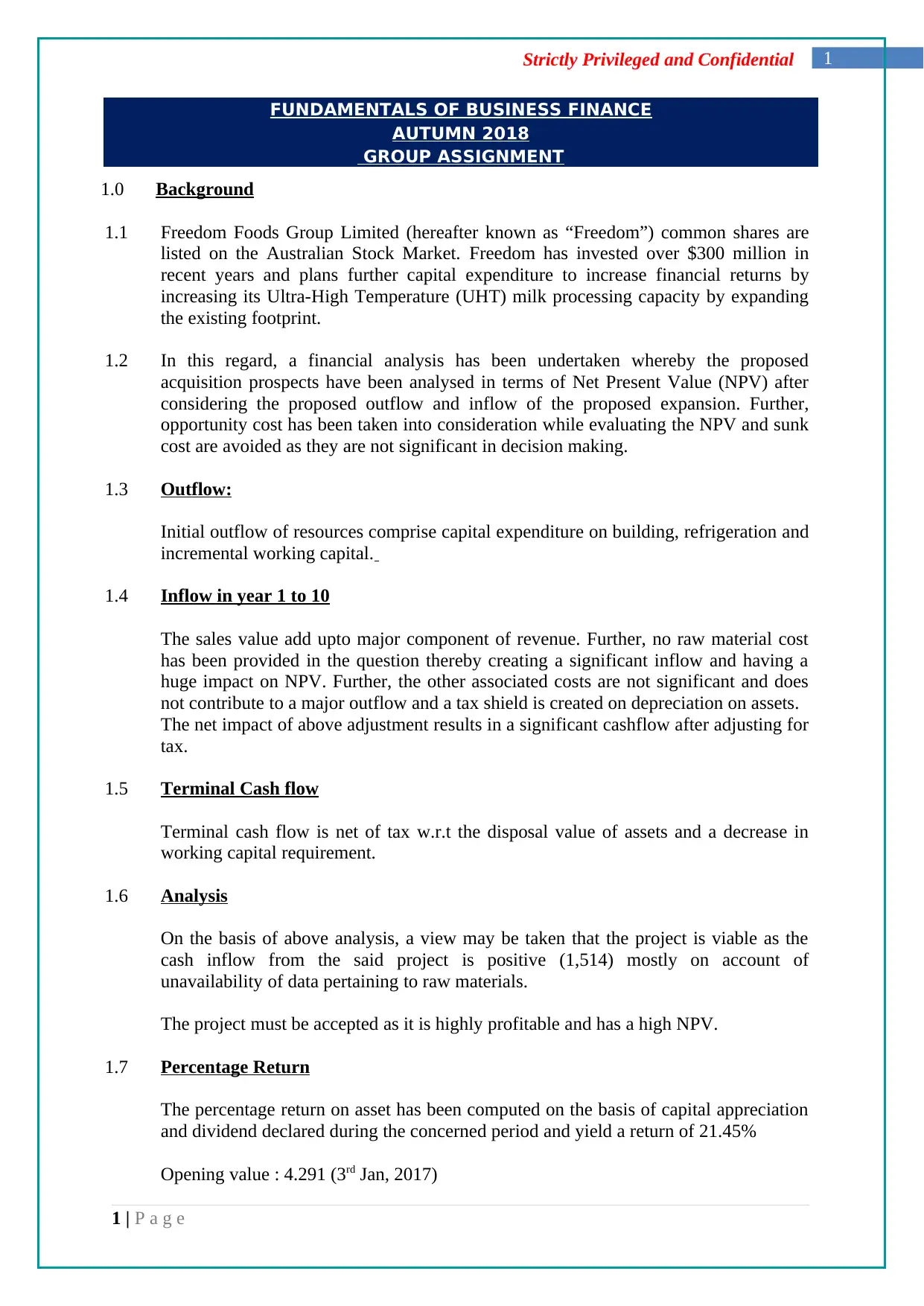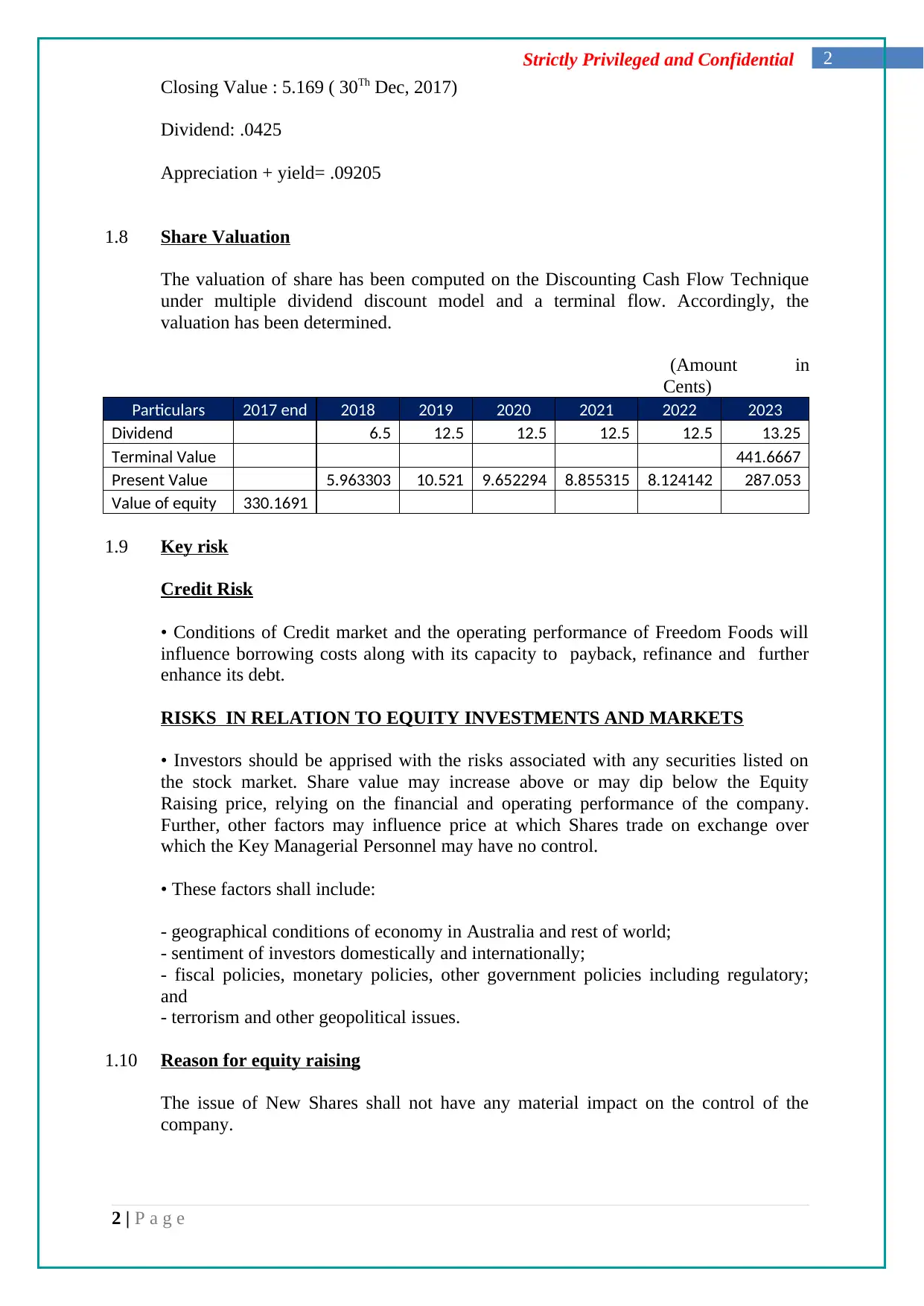Financial Analysis Report: Freedom Foods Group, Autumn 2018
VerifiedAdded on 2023/06/11
|2
|647
|156
Report
AI Summary
This report presents a financial analysis of Freedom Foods Group, focusing on capital expenditure initiatives and their impact on shareholder wealth. It assesses the Net Present Value (NPV) of expanding the Ultra-High Temperature (UHT) milk processing capacity, considering initial outflows like capital expenditure and incremental working capital, as well as inflows from sales value. The analysis also incorporates terminal cash flow considerations, percentage return on assets, and share valuation using the Discounting Cash Flow Technique. Key risks, including credit risk and risks related to equity investments, are identified. The report concludes that the project is viable due to a positive cash inflow and high NPV, primarily due to the absence of raw material cost data, and recommends accepting the project. The share valuation is computed using a dividend discount model, determining the value of equity based on projected dividends and terminal value.
1 out of 2







![[object Object]](/_next/static/media/star-bottom.7253800d.svg)